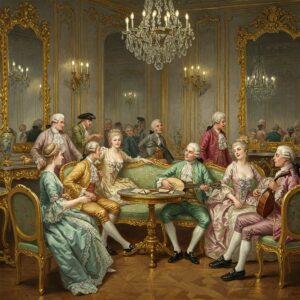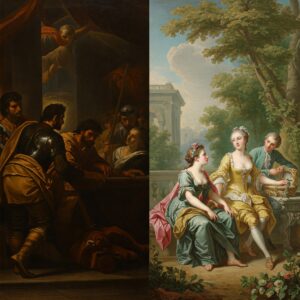Rococo Art Paintings: The Playful Revolution in 18th Century Europe
Rococo art paintings represent one of the most captivating and distinctive artistic movements in European history. Emerging in early 18th century France, the Rococo style brought a revolutionary approach to painting that emphasized playfulness, intimacy, and ornate decoration—a deliberate shift away from the grandeur and formality of the preceding Baroque […]

 Step into the dazzling world of Rococo painting and explore the art style that defined 18th-century Europe. Emerging as a playful reaction against the severe Baroque, the Rococo style is synonymous with lightheartedness, elegance, and intricate ornamentation. This decorative movement, prominent mainly in France, is celebrated for its curved forms, soft pastel colors, and engaging themes of love, mythology, and aristocratic leisure. You’ll find few straight lines here; instead, look for dynamic S- and C-curves, shell motifs, and a pervasive sense of joyous intimacy.
Step into the dazzling world of Rococo painting and explore the art style that defined 18th-century Europe. Emerging as a playful reaction against the severe Baroque, the Rococo style is synonymous with lightheartedness, elegance, and intricate ornamentation. This decorative movement, prominent mainly in France, is celebrated for its curved forms, soft pastel colors, and engaging themes of love, mythology, and aristocratic leisure. You’ll find few straight lines here; instead, look for dynamic S- and C-curves, shell motifs, and a pervasive sense of joyous intimacy.